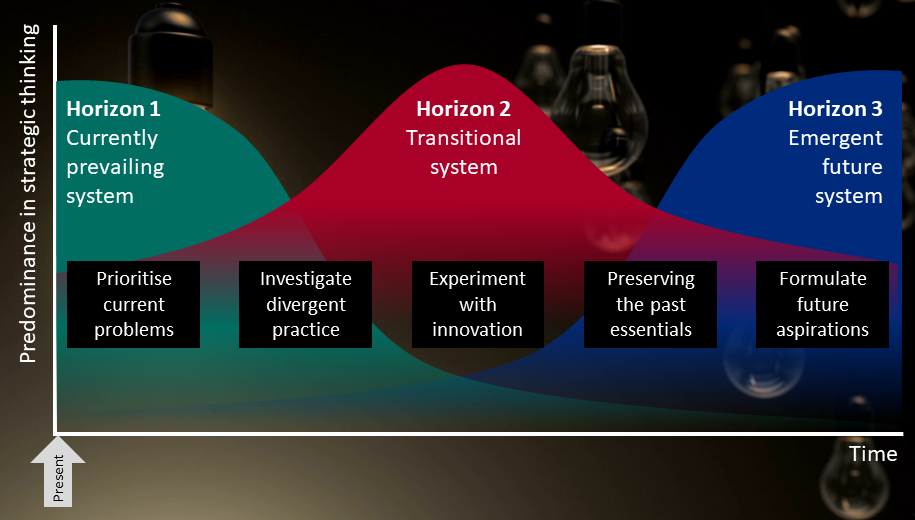Trust you!
Posted by David Winter in Reflective practice, Uncategorized, Understanding clients on 10 November 2023

While looking into the concept of the working alliance, I came across a delightful article on the subject of trust in a rather obscure journal on school leadership.
Vodicka, D. (2006). The four elements of trust. Principal Leadership, 7(3), 27–30.
Vodicka identifies the following four elements as being necessary for the building and maintenance of trust.
- Consistency — This is based on the fact that we all try to make predictions about people’s future behaviour based on past behaviour. The more we perceive our predictions to be accurate the more we trust that we understand the other person. It’s also about consistency of meaning, values and intention — not giving different messages to different audiences.
- Compassion — Literally meaning ‘being together in suffering’, this is about valuing all aspects of the other person’s experience, putting yourself in their shoes. The more that people perceive that you have put effort into understanding them, the more likely they are to reciprocate.
- Communication — This consists of unfiltered listening and authentic sharing which has a positive intention but is not afraid to encompass challenging feedback. Defaulting to openness and transparency can have its risks, but it is that kind of risk-taking that establishes trust.
- Competency — This is partly about getting things done, doing things as well as you can and making your actions match your words. It’s also about being willing to expose your limitations and to ask for and accept help.
All four need to be present and interacting with each other.
It is interesting to reflect on successful and unsuccessful client (and other) relationships to see which elements might have been missing from the mix.
Feedback to the Future
Posted by David Winter in Reflective practice, Uncategorized on 13 September 2023

So much of the advice I seen on providing peer feedback is like visiting the past. How many times do we have to suffer the tired recommendation about using a ‘feedback sandwich’? The fact that you are attempting to ‘balance’ positive and negative comments means that what you’re engaging in is not strictly feedback; it is performance assessment. That’s fine if both parties have agreed to that and if they have established clear criteria and boundaries beforehand.
Even if we are talking about assessment rather than feedback, there is mixed evidence about the effectiveness of the ‘sandwich’ method. It is possible this desire to mitigate the ‘bad news’ is as much to do with preserving the self-image of the assessor as it is sparing the feelings of the receiver (Bond & Anderson, 1987).
- Bond, C. F., & Anderson, E. L. (1987). The reluctance to transmit bad news: Private discomfort or public display? Journal of Experimental Social Psychology, 23(2), 176–187. https://doi.org/10.1016/0022-1031(87)90030-8
- Bottini, S., & Gillis, J. (2021). A comparison of the feedback sandwich, constructive-positive feedback, and within session feedback for training preference assessment implementation. Journal of Organizational Behavior Management, 41(1), 83–93. https://doi.org/10.1080/01608061.2020.1862019
- Dolan, E. A., Fleming, B. L., Keppel, D. P., & Covert, J. M. (2021). Sandwich With a Side of Motivation: An Investigation of the Effects of the Feedback Sandwich Method on Motivation. ISSN: 2189-1036 – The IAFOR International Conference on Education – Hawaii 2022 Official Conference Proceedings, 297–306.
- Henley, A. J., & DiGennaro Reed, F. D. (2015). Should You Order the Feedback Sandwich? Efficacy of Feedback Sequence and Timing. Journal of Organizational Behavior Management, 35(3–4), 321–335. https://doi.org/10.1080/01608061.2015.1093057
- Parkes, J., Abercrombie, S., & McCarty, T. (2013). Feedback sandwiches affect perceptions but not performance. Advances in Health Sciences Education, 18, 397–407.
- Prochazka, J., Ovcari, M., & Durinik, M. (2020). Sandwich feedback: The empirical evidence of its effectiveness. Learning and Motivation, 71, 101649. https://doi.org/10.1016/j.lmot.2020.101649
The first problem I have with the sandwich method is that it demotes affirming communication to mere sugar coating or padding to make the ‘constructive’ assessment more palatable or less uncomfortable. This is exacerbated by the fact that anyone familiar with the sandwich method will automatically discount the ‘positive’ elements for this reason.
Helping people to recognise, understand and appreciate what they are already doing well and to build on that is constructive, especially when they are not yet confident in their own competence or in what good practice looks like.
So, what is feedback?
In a scientific sense, feedback happens when information from the outputs of a system are simultaneously fed back into the inputs of the system. Usually, feedback loops like this enable systems to self-regulate their behaviour and maintain an optimal goal state by automatically increasing or decreasing the activities producing the outputs.
To get really picky, I want to focus on that work ‘simultaneously’. For it to be true feedback, the information should be fed back during the activity to facilitate behaviour adaptations in the present moment (see Bottini & Gillis, 2021 above). If the information provision happens after the event, then the behaviour modification can only happen at some point in the future if the activity is repeated. In this case, it would be more accurate to call it review and feed-forward.
So, if it’s not performance assessment, feedback might be better described as collaborative reflection involving an agent and an observer. In performance assessment, the power of evaluation sits with the observer. In collaborative reflection, it is the agent who is empowered to evaluate their own performance by comparing their recollections of the event with recollections provided by the observer in order to identify changes that will affect future behaviours. This is related to the idea that feedback is about promoting self-regulated learning.
- Oates, S. (2019). The Importance of Autonomous, Self-Regulated Learning in Primary Initial Teacher Training. Frontiers in Education, 4. https://www.frontiersin.org/articles/10.3389/feduc.2019.00102
My second problem with the sandwich is that it implicitly assumes the observer is the one doing all the talking – that the communication is unidirectional. An alternative model based on a dialogical approach to collaborative learning is the Ask-Tell-Ask model:
- Ask – Elicit the agent’s own perceptions of their performance
- Tell – Provide additional observations to either reinforce or modify the agent’s perceptions
- Ask – Check whether the agent understands, agrees with and knows how to act on the reflection
- French, J. C., Colbert, C. Y., Pien, L. C., Dannefer, E. F., & Taylor, C. A. (2015). Targeted Feedback in the Milestones Era: Utilization of the Ask-Tell-Ask Feedback Model to Promote Reflection and Self-Assessment. Journal of Surgical Education, 72(6), e274–e279. https://doi.org/10.1016/j.jsurg.2015.05.016
Information and attention
To be useful in reflective comparison, the information provided by the observer needs to be different from the information already held by the agent about the event being reviewed. If you are just telling them things that they are already aware of about what was effective and what they could have done better, you are adding nothing. So, if you’re providing feedback to more experienced peers, it pays to be particularly thorough in exploring perceptions the first Ask phase.
In exploring perceptions, it could be useful to consider different ways in which the brain pays attention to stimuli. Attention network theory describes three interactive systems which manage how we pay attention to the world around us:
- Orienting system – focus attention to particular aspects of the environment
What did the agent notice? How does that differ from what the observer noticed? - Control system – prioritise relevant over irrelevant stimuli
What did the agent label as significant? How does that differ from what the observer considered significant? - Alerting system – anticipates upcoming stimuli
What did the agent expect to happen? How does that differ from what the observer expected?
- Markett, S., Nothdurfter, D., Focsa, A., Reuter, M., & Jawinski, P. (2021). Attention networks and the intrinsic network structure of the human brain. Human Brain Mapping, 43(4), 1431–1448. https://doi.org/10.1002/hbm.25734
As a side note, these three different types of attention roughly correspond to three aspects of meaning:
- Coherence – Are you able to process an experience? Is it describable?
- Significance – Are you able to evaluate the relevance of an experience? Is it important?
- Purpose – Are you able to determine your response to an experience? Does it have implications for your choices and actions?
- Martela, F., & Steger, M. F. (2016). The three meanings of meaning in life: Distinguishing coherence, purpose, and significance. The Journal of Positive Psychology, 11(5), 531–545. https://doi.org/10.1080/17439760.2015.1137623
My third problem with the sandwich method is that it tells you nothing about how to provide feedback that actually facilitates meaningful reflection.
Ooh, aah! Just a little bit of group guidance
Posted by David Winter in Models on 11 August 2023

We have a plethora of models for individual guidance and coaching and a vast range of pedagogical (or andragogical or heutagogical) models for education, but small group guidance sits between these two extremes. And there don’t seem to be many models out there specifically for this mix of guidance and education.
GINA, gee!
GINA (Group Integrative Narrative Approach) is a model developed by Susan Meldrum of Edinburgh Napier University which brings together the GROW coaching model, Kolb’s experiential learning cycle and narrative approaches to career guidance.
Read the rest of this entry »Imagination. Life is your creation
Posted by David Winter in Equality, Socio-economic factors on 24 July 2023

In a recent LinkedIn post Dr Naeema Pasha talked about the contribution of Barbie (Barbara Millicent Roberts) to the field of career theory, citing her You Can Be Anything slogan as the encapsulation of her theoretical position.
This has been viewed by some as a direct oppositional response to more structuralist theories of gendered career choices, exemplified by Gottfredson’s Circumscription and Compromise. However, Roberts’ initial forays into the active de-gendering of career stereotypes pre-dates the formulation of Circumscription & Compromise by almost 20 years.
Some have criticised Roberts’ approach as potentially raising women’s career expectations to a level which increases the risk of a failure to realise unrealistic ideals, possibly leading to career inaction (Verbruggen & De Vos, 2020).
Whilst the use of the word ‘Be’ rather than ‘Do’ places Roberts’ theory firmly within the domain of career identity, some have argued that it conceptualises identity in very superficial terms. They argue that it should be more accurately expressed as You Can Pretend to Be Anything If You Buy the Appropriate Wardrobe and Accessories. However, Cutts, Hooley & Yates (2015) have explored the important role that dress and appearance plays in the formulation and expression of professional identity.
Others have characterised Roberts as playing a role in condoning women’s tragic complicity in their own objectification in order to procure a degree of safety within an exploitative, hedonistic patriarchy (Dif et al, 1997).
If you’re interested in other career theories related to women and minoritised ethnic groups see this article from NGRF.
My favourite career development theory
Posted by David Winter in Uncategorized on 20 July 2023

I was recently interviewed by the wonderful Julia Yates about the application of career theory to practice for a CDI learning project. As part of the interview, she asked me for my favourite career development theory, even though she already knew the answer because I have previously bored her on the subject.
The Theory of Work Adjustment (TWA) is definitely on my favourites list, mainly because I feel that it is so often undervalued and neglected. Part of the reason for it’s neglect is possibly because it is believed to be part of the person-environment fit school of matching theories. Which it (sort of) is. But it’s much more than that.
Many person-environment fit theories work on the often unstated assumption that it’s about fitting individuals into appropriate niches in a fairly stable labour market environment. That’s why they date so quickly when the labour market environment is changing. But TWA envisages ‘fit’ as a dynamic two-way process rather than a one-off, one-sided event. It contains within it the idea that both the individual and the environment can act to change themselves and each other to optimise the degree of fit.
It prefigures more contemporary discussions around resilience by focusing attention not just on the individual’s ability to respond flexibly to the demands of their environment but also on the ability of the environment to respond flexibly to the needs of the individual.
It also contains concepts relevant to social justice in careers – active attempts at adjustment of the environment by the individual. Or, in other words, emancipatory social agency. Obviously, Dawis, England and Lofquist didn’t really explore this potential aspect of their model despite developing it in the 60s.
I think the reason it has this potential to be applied to a wide range or perspectives is that it is a properly systems-based approach. As a theory, it focuses more on the processes of interaction than the content. However, the proponents were swept away with the prevailing approach of the times to develop various psychometric instruments which emphasised content over process.
Six Griefs of Good Leadership – (6) LONELINESS
Posted by David Winter in Career success, Development, Effectiveness on 19 March 2016
In the sixth part of this series looking at the importance for leaders of working effectively with your emotions we will examine LONELINESS.
- Who can I talk to about this?
- Am I the only one seeing this?
- Nobody understands me.
By definition, if people are following you, they are not alongside you. Even if you don’t do anything to distance yourself from your team, just taking on a leadership role means that people will put you in a different category. Even the most authentic leader cannot afford to burden their team with all of their innermost thoughts and feelings. You have to shoulder the responsibility.
Six Griefs of Good Leadership – (5) DISILLUSIONMENT
Posted by David Winter in Career success, Development, Effectiveness on 19 March 2016
In the fifth part of this series looking at the importance for leaders of working effectively with your emotions we will examine DISILLUSIONMENT. How does the emotion that prompts us to let go of inaccurate expectations help us to become better leaders?
- How could I have thought that?!
- I thought I was better than this!
- This is not how it should be!
As with disgust, the word disillusionment is often used to describe people’s reactions to a leader rather than the experience of the leader him/herself. Religious writer John Ortberg has said that ‘Leadership is the art of disappointing people at a rate they can stand‘ but it is also about disappointing yourself at a rate that promotes growth.
Six Griefs of Good Leadership – (4) DISGUST
Posted by David Winter in Career success, Development, Effectiveness on 19 March 2016
In the fourth part of this series looking at the importance for leaders of working effectively with your emotions we will examine DISGUST. Is your willingness to engage with activities that you don’t like the sign of a potential leader? How often do you use your leadership position to offload the jobs you hate? How much does corruption or incompetence offend you?
- Do I really have to do this?!
- How could they produce such shoddy work?
- This behaviour is unacceptable!
- I don’t want to be associated with these practices!
There is a pithy saying often credited to Mark Twain but which probably originated with a French writer Nicolas Chamfort.
Eat a live toad the first thing in the morning and nothing worse will happen to you the rest of the day.
Six Griefs of Good Leadership – (3) ANGER
Posted by David Winter in Career success, Development, Effectiveness on 19 March 2016
In the third part of this series looking at the importance for leaders of working effectively with your emotions we will examine ANGER. Is displaying anger as a leader always counter productive? Will it help or harm your leadership development?
- How could they do that to one of my team?!
- Don’t they see how important this is?!
- I’m not giving up that easily!
Anger is one of the few emotions that bad leaders are often willing to embrace – venting their frustrations on their team in order to make themselves feel more powerful. This is why so much that is written about leadership and anger focuses on how to control it and remain calm.
However, feeling anger is a sign that you care about something and want to protect that thing from a potential threat. In our evolutionary past the thing we were protecting with our anger might have been our own survival or the safety of our family.


Recent comments